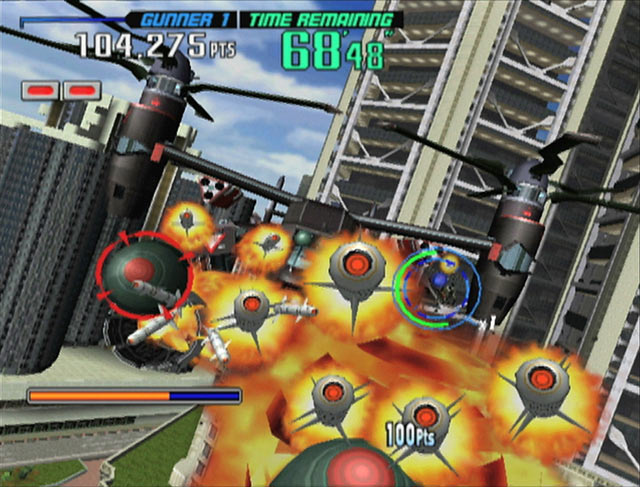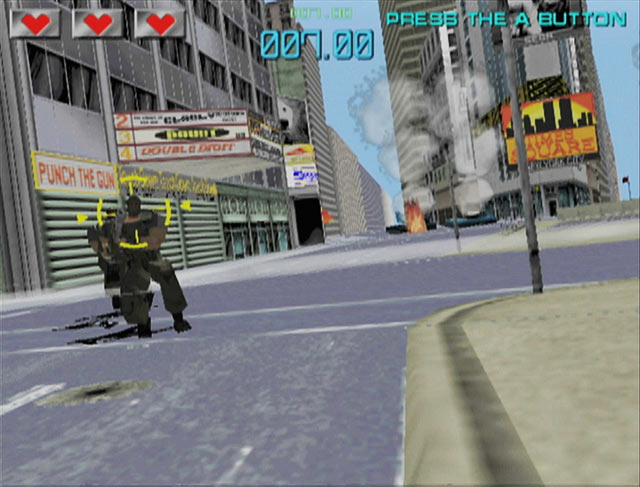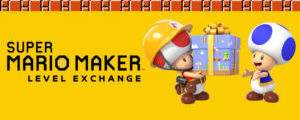Old-school arcade shooting, lots of explosions, steady IR
Only 90 minutes of gameplay, seriously dated graphics, few extras

Wii has been home to plenty of on-rails shooters — perhaps too many, in fact, depending on who you talk to. Well, SEGA has decided to add to the collection, this time with a pair of ported arcade hits from the 1990s: Gunblade NY and L.A. Machineguns. What shows up on Wii are a pair of arcade games that are fast, furious, and (for better or worse) faithful recreations of their coin-op origins.
The two games in the compilation originated as those oversized arcade cabinets with large mounted machine guns pointed at the screens. That atmosphere has been brought to Wii courtesy of the Wii Remote’s IR and the capacity for two-player co-op. The game allows for either Wii Remote play, Wii Remote and Nunchuck, or Wii Zapper play; in reality all of these modes work just fine and in fact the Wii Remote alone will be good enough for most players.
With a few small exceptions, both games play about the same. In each, the concept boils down to an on-rails arcade experience where 1-2 players, each with three units of health, shoot constantly to kill enemies and rack up points. In Gunblade NY, players operate out of a helicopter, shooting at everything that moves while a timer clocks up to show how long the player has lasted. In L.A. Machineguns, players operate out of flying single-person police vehicles, shooting at nearly everything that moves (save the occasional civilian) while a timer clocks down to give each level a time limit.
In contrast to many modern on-rails games, the gameplay is relentlessly furious. From start to finish the player is flying around, shooting ninja-like enemies and massive robot monster mechs; no Time Crisis stop-and-hide business here. Ammo is unlimited, so players can fire away without prejudice. Lives are also unlimited and come without the need for quarters, although points are obviously higher for those who survive longer. The plots of the games aren’t terribly deep but the fast-paced design does make the obligatory terrorist-hunting somewhat interesting.

The games are also pretty much ports of the originals, which is good or bad depending on how you look at it. Gunblade NY is pretty dated and washed out while LA Machineguns is clearly better-looking and more colorful, although both of them obviously show their Clinton-era age. Likewise, the sound is frenetic ’90s synth-pop along with terrible voice acting that is so muffled like it’s coming through a thick wall. In a twist of humor, the game often projects the voice acting through the Wii Remote’s microphone, which is itself so cheap that even normal voicework coming through it sounds like it came through a thick wall.
The biggest downer to the game is that it is terribly short. In contradistinction to its wordy title, both campaigns in the game can be experienced in about an hour and a half. This makes the game’s $30 asking price, budget though it is, feel a bit steep. Notwithstanding the shooter junkie, Gunblade NY & L.A. Machineguns is probably not going to consume attention far beyond a few hours at best before it makes its way back to the shelf. SEGA did tack on some extras, such as online leaderboards and a points ranking system that can unlock some extra weapons, but that’s not much. Likewise, there is a new points combo system and some optional challenge modes that utilize the game’s existing levels, but the game is little changed from its origins.
That, ultimately, may be the rub. As a bit of nostalgia this game is not bad… assuming, of course, that players actually experienced these titles way back when. As modern games go, this one looks pretty bad, is short, and has very little beyond the core game. It is perhaps a sign of its brevity that the credits themselves are quite short — in other words, SEGA invested very few people (and, by extension, very little money) in putting this one together. Even so, there is a strangely compelling quality about the game that separates it from even modern shooter fare. It’s so fast and over-the-top that it’s a far more natural choice for a pick-up-and-play shooter than a lot of the stilted fare that passes for on-rails on Wii. For that reason, it at least deserves attention in the rental category.
Nintendojo was provided a copy of this game for review by a third party, though that does not affect our recommendation. For every review, Nintendojo uses a standard criteria.




 ShareThis
ShareThis





